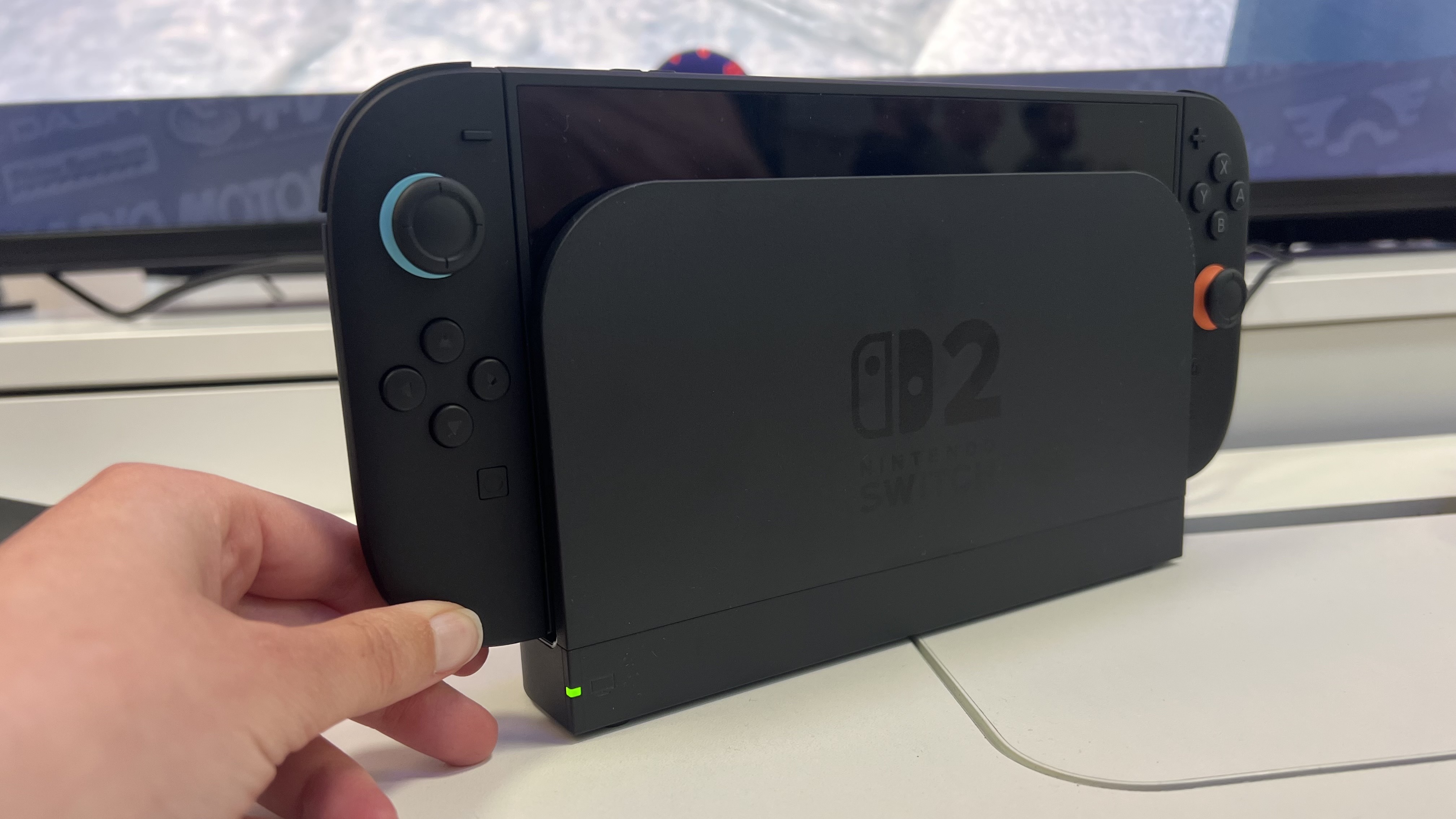
(Image credit: Future)
Last night, in the silence of my room, I noticed a noticeable whine from the Nintendo Switch 2 while diving into Breath of the Wild NS2 Edition. This sound dissipates during less intensive activities, such as navigating the home screen or playing classic Nintendo Switch games, but it’s prominent enough to catch my attention when everything else around is quiet.
I put the Nintendo Switch 2 on charge, and in two hours and nine minutes, it was back to 100%. This is short of the three-hour estimates given before launch, using the official power cable while in sleep mode. Although it’s just meeting the minimum battery life expectations set by Nintendo, it doesn’t quite rival the Nintendo Switch OLED’s standards. That said, this was at full brightness with auto-brightness turned off, suggesting there’s room for power optimization.
While it may not be perfect, the new Switch 2 is outperforming more power-consuming devices like the Asus ROG Ally as far as efficiency is concerned, even though previous Nintendo devices have demonstrated better battery life. I’m charging the system fully to time its discharging while playing Breath of the Wild. I have approximately four hours till the new games arrive at Summer Games Fest – perfect for seeing if the Switch 2 holds up under prolonged gaming.
A deep dive into Tears of the Kingdom shows the handheld resolution capabilities and newly added 3D spatial audio impressively. It’s so realistic that I instinctively reacted to in-game sounds as if they were happening in my room. While the new audio tech won’t rival the precision of top gaming headsets, it’s still a beneficial upgrade.
Connecting cameras to the Nintendo Switch 2 is a breeze. Today, I tested the official model alongside my Logitech StreamCam, and both performed admirably. Although the Logitech camera doesn’t integrate with Nintendo’s face tracking features in GameChat, it’s definitely capable for general use. Within system settings, connecting a USB camera is straightforward, providing flexibility for users with existing webcams.
Gaming with the Logitech G Pro X Superlight 2 DEX alongside the Joy-Con 2 mouse sensor in Nobunaga’s Ambition shows clear differences in responsiveness, with official Joy-Cons offering superior performance. While limitations exist possibly due to Nintendo’s hardware restrictions, certain USB mice, including the Alienware Pro Wireless, are functioning well. Unfortunately, not all tested mice register fully, raising questions about compatibility and performance theory.
The notable discovery of the official Nintendo Switch 2 ‘Sleeper Case’ lies in its secure, albeit stiff, zip. While this accessory boasts a sturdy construction, with space for eighteen game cards nearly doubling carrying capacity of previous cases, there’s room for skepticism regarding its ‘virtually indestructible’ claims.
Charging the Nintendo Switch 2 with the widely-loved Genki Covert Dock for HDMI output was unsuccessful; while it charges the handheld perfectly, the HDMI output capability appears inactive. Regardless, here’s hoping for future support or third-party solutions for easy display connections when on the move.
Noticing input registration lag when waking from sleep mode is apparent, causing frustration compared to past models. Despite this hiccup, the Switch 2’s HDR performance holds up excellently in docks, standing alongside the powerhouses like the PS5. Its value for portable use is evident, though not set for docked dominance, especially at a price akin to Sony’s latest console.
Delving into a long day of testing from starter summaries to intuitive impressions, the Nintendo Switch 2 covers a broad spectrum of user needs as it adapts effortlessly from stunning HDR experiences on 4K screens to portable precision on the go, even if not every feature perfects the art form.